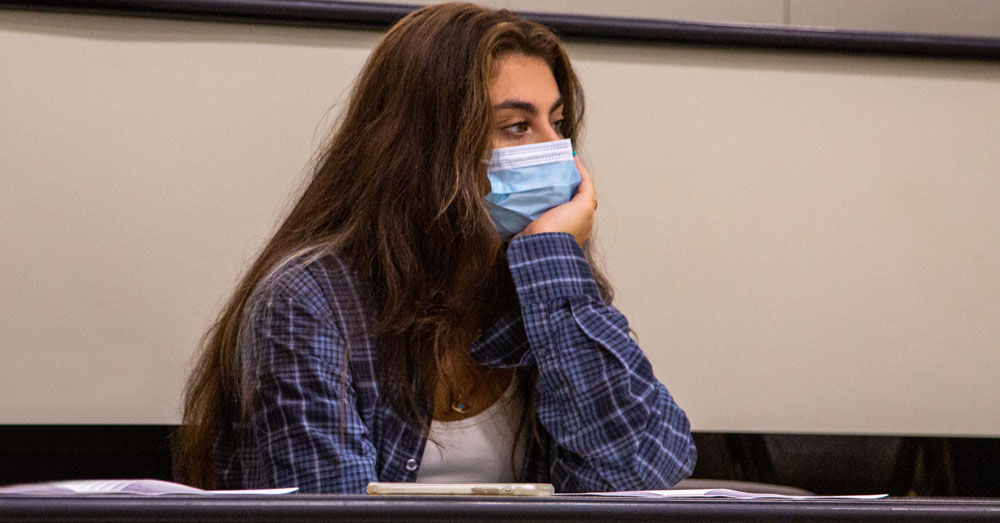
According to Harvard Medical school in 2008, upwards of half a million U.S. citizens suffer from seasonal affective disorder, or SAD. As the name denotes, it is a classification of a major depressive disorder associated with the seasons. Those with SAD typically experience symptoms akin to depression during the fall and winter months, with the most challenging months being January and February. Brought on by the lack of sunlight compared to warmer months, SAD is not the winter blues—its symptoms may disrupt one’s daily life and be highly distressing.
More specifically, shorter daylight hours and less sunlight throughout the winter may cause a biochemical imbalance in the brain, as well as a change in one’s biological clock, throwing off their daily schedule. This is further accelerated by daylight saving time on the first Sunday in November, when the clock are set back an hour. Once this is put into effect, the sun starts to set earlier, which may affect bodily functions and disrupt the circadian rhythm, which is responsible for regulating when we eat, rise, and sleep.
SAD may be particularly pronounced among college students. Because they may not have an early-morning routine built into their schedule, college students may be more likely to stay up late studying or hanging out with friends. As a result, getting a regular dose of vitamin D—which helps to keep the symptoms of SAD at bay—becomes harder during the winter months. Additionally, women are more likely than men to deal with SAD, and living in New York State also increases the likelihood of SAD, as there are fewer daylight hours in the north this time of year. For many, SAD will present itself in young adulthood, and is more likely to occur in individuals who have major depressive disorder or bipolar disorder, and even more so with bipolar II disorder.
Symptoms of SAD
SAD is a serious condition, and its symptoms overlap with major depressive disorder, so it may be challenging to diagnose initially. Common symptoms include, but are not limited to:
- Loss of energy or increased fatigue, regardless of how well rested you are
- Appetite changes—typically eating more and craving carbs
- Feeling sad or experiencing a depressed mood
- Lack of interest or enjoyment in activities you typically enjoy
- Change in sleep—usually sleeping more/too much
- Feeling guilty or worthless
- Having a hard time thinking, concentrating, or with decision making
- Thoughts of death or suicide
- Experiencing slowed movements and/or speech; conversely, having a hard time sitting still
Tips to Ease Seasonal Affective Disorder in College Students
Have a regular bedtime
Maintaining a sleep schedule for college students can be difficult, given the long nights studying and working that typically occur, but it is beneficial to go to bed around the same time each night. Staying up too late can increase the likelihood of depression and can also have a negative impact on academic success. Moreover, lack of sleep can increase the chance of having SAD, as well as intensify symptoms of general depression.
Tip: Use bedtime accessories like eye masks and earplugs and compile a bedtime relaxation routine to potentially help improve your sleep.
Maintain balance and a routine
While it’s important to carve out time for studying, work, volunteering, etc., setting aside time to unwind is just as critical to maintaining sound mental health.
Tip: Create a routine of things you can do to manage stress and keep anxiety in check, such as exercising, watching your favorite show, listening to music, etc.
Put emotional and physical self-care first
While it can be tough to stay active and social during the winter months, hibernating and not leaving the house can increase the chance of not getting enough sunlight and experiencing SAD.
Tip: Try to spend time with friends and get outside on a regular basis/whenever possible during the winter months.
Look into light therapy
Light therapy boxes may provide some relief for SAD by exposing the user to a bright light to make up for the lack of sunlight exposure in the darker months. The ideal treatment is to sit in front of a light box (10,000 lux) every day for about 30-45 minutes, ideally first thing in the morning, from fall to spring.
Tip: See if your campus has access to light therapy boxes to rent, or consider looking into purchasing one for yourself if you’re able to.
Take advantage of campus counseling + health and wellness centers
If SAD is negatively affecting your everyday life and making it difficult to feel happy, consider reaching out to your campus counseling center. If your campus does not have an on-campus counseling center, consider reaching out to Student Affairs to assist with finding you the right care.
Tip: Visit your campus counseling center for on-campus mental health support, or see what services your local community offers for mental health care.
Resources to Help Make Mental Health Care Routine
There are many ways to stay on top of your mental health, from talking to friends and family about your problems to setting a counseling routine with a trained professional. Throughout the SUNY system, each campus either has an on-campus counseling center or provides access to community mental health resources to help students. If you or a friend is in need of help, visit SUNY’s mental health resources page.
If you are currently experience a crisis, reach out to one of the following resources:
National Suicide Prevention Lifeline:
1-800-273-8255
(1-800-273-TALK)
New York State COVID-19 Emotional Support Hotline:
1-844-863-9314
Veterans Crisis Line:
- Call: 1-800-273-8255 (1-800-273-TALK) and Press 1
- Text: 838255
- Chat: https://www.veteranscrisisline.net/get-help/chat
Support for deaf and hard of hearing:
- Chat and text message (838255)
- For TTY users: Use your preferred relay service or dial 711 then 1-800-273-8255. Or chat with us.



